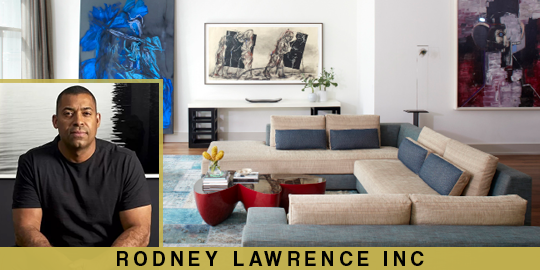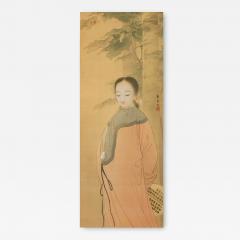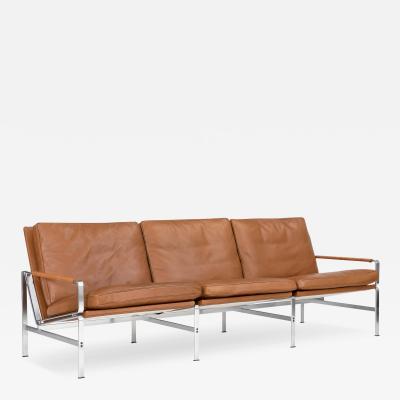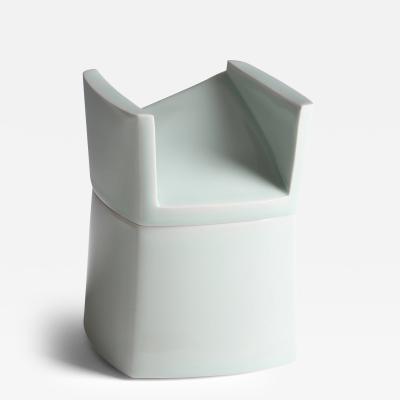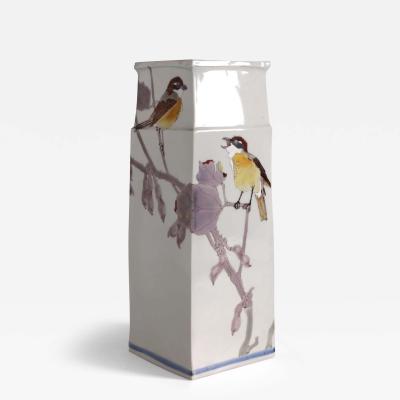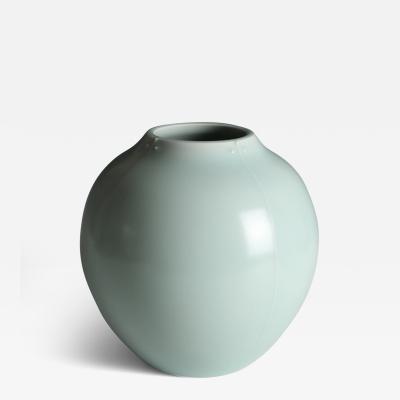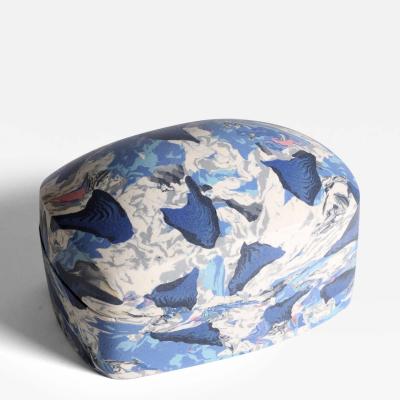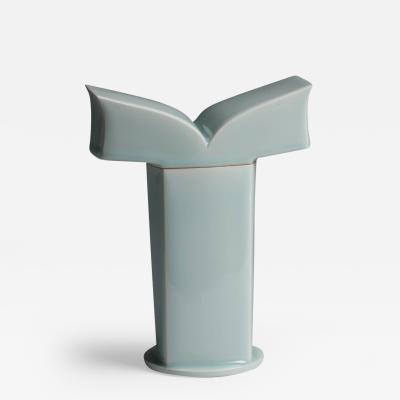Chinese Beauty, 1920s
-
Description
Kikuchi Keigetsu
Chinese Beauty, 1920s
Hanging scroll; ink and colors on silk
Overall size 79¾ x 25¾ in. (203 x 65.5 cm)
Image size 50¼ x 19¾ in. (127.5 x 50)
T-4769
Signed at middle right Keigetsu utsusu (drawn by Keigetsu); seal: Keigetsu
Comes with a double wood tomobako storage box, the inner box inscribed Reijin (Beauty), contained within a red-lacquer outer box; the scroll labeled outside Keigetsu Tōbijin (Chinese beauty by Keigetsu)
A demure young Chinese lady of high rank stands pensively beneath a broad-leafed tree; she wears a long flowing robe, fastened at the front with a carved white jade brooch, and holds behind her back a screen fan whose inscription accounts for her mood: the Liuhui 六悔 (“Six Regrets” or “Six Repentances,” in Japanese Rokkai) a poem of forty-two characters written late in life by Kou Zhun 寇准 (also Kou Pingzhong寇平仲, 961-1023), a righteous Chinese official who was famously not afraid to speak truth to power in the shape of the Song Emperor Taizong:
If you are supposed to be conducting official business but think about music, you will regret that you wasted time; If you are rich but not thrifty, you will come to regret your extravagance; If you try to master an art when you are no longer young, you will regret that you didn’t do it sooner; If you just look at things without studying them in depth, you will regret it when need to put them into practice; If you get drunk and make wild statements, you will regret it when you wake up; If you don’t take good care of yourself when you are in good health, you will regret it when you get sick. Make use of this inscription throughout your life.
Kikuchi Keigetsu, who painted this historical fantasy at the zenith of his career, was a native of mountainous Nagano Prefecture in central Honshu (Japan’s largest island). He started his artistic education under a local painter, Kodama Katei (1841–1913), before moving in 1896 to Kyoto where he studied first with Utsumi Kichidō (1849–1925) and later with the more famous Kikuchi Hōbun (1862–1918), one of the founders of the Kyoto style of Nihonga (neo-nativist painting). Keigetsu exhibited early and widely: at the fourth Shinko Bijutsuhin Tenrankai (Exhibition of Ancient and Modern Art, 1898), the fifth Naikoku Kangyō Hakurankai (National Industrial Exposition, 1903), and the first Bunten national exhibition (1907). In 1906 he married Kikuchi Hōbun’s daughter and took his father-in-law’s surname. He would go on to exhibit twenty times at the Bunten and its successor exhibitions right up until 1937, becoming an exhibition juror in 1918 and teaching at the Kyōto Shiritsu Kaiga Senmon Gakkō (Kyoto Municipal Painting School). In 1915 he also showed his work at the prestigious Tōkyō Taishō Hakurankai (Tokyo Taisho Exhibition, see accompanying file). In 1922 he traveled to Europe where he studied the traditions of Western art as well as contemporary movements such as Fauvism and Cubism and on his return founded his own private painting academy in 1925. He took further senior teaching positions in Kyoto, was named Teishitsu Gigeiin (Artist to the Imperial Household) in 1934, and during the war years was an ardent promoter of exhibitions supporting the military; later he exhibited a painting featuring child victims of one of the two nuclear attacks. Throughout his career Keigetsu specialized in historical figure subjects for which he developed a distinctive style based on traditional Japanese narrative painting, often applying it to Chinese subjects, as here.
He was a member of the Nihon Geijutsuin (Japan Art Academy) -
More Information
Documentation: Signed Period: 1920-1949 Condition: Good. Styles / Movements: Asian Art Incollect Reference #: 750068 -
Dimensions
W. 25.75 in; H. 79.75 in; W. 65.41 cm; H. 202.57 cm;
Message from Seller:
Thomsen gallery, located in a townhouse on the Upper East Side of Manhattan, offers important Japanese paintings and works of art to collectors and museums worldwide. The gallery specializes in Japanese screens and scrolls; in early Japanese tea ceramics from the medieval through the Edo periods; in masterpieces of ikebana bamboo baskets; and in gold lacquer objects.











